Exploring the Nutritional Benefits of a Paleo Japchae Recipe
Japchae is a cherished Korean dish that combines stir-fried sweet potato noodles with colorful vegetables and often, a protein source. However, traditional japchae often includes ingredients not suitable for those adhering to the paleo diet. Fortunately, crafting a paleo japchae recipe allows you to enjoy this delicious dish while aligning with health-focused eating. Let’s explore the nutritional benefits of a paleo japchae recipe and why it’s a fantastic addition to your meal rotation.
Understanding Paleo Ingredients
The paleo lifestyle advocates for whole foods – think meats, fish, fresh fruits, vegetables, nuts, and seeds, while steering clear of processed foods, grains, legumes, and dairy. A paleo japchae recipe embraces these principles and focuses on clean, nutrient-dense ingredients.
Key Ingredients in a Paleo Japchae Recipe
- Sweet Potato Noodles: These are gluten-free, nutrient-rich, and provide a slightly sweet flavor that complements the dish beautifully.
- Seasonal Vegetables: Adding an array of colorful vegetables not only enhances the visual appeal but also enriches the meal with vitamins. Consider carrots, spinach, bell peppers, and mushrooms.
- Protein Options: Grass-fed beef, chicken, or shrimp are excellent choices. They contribute to muscle building and provide essential amino acids.
- Healthy Fats: Incorporate avocado oil or coconut oil for cooking. These fats are heart-healthy and aid in the absorption of fat-soluble vitamins.
- Flavor Enhancers: Coconut aminos serve as a soy sauce alternative, while garlic and ginger add depth and aroma.
Enhancing Nutritional Value
A paleo japchae recipe not only satisfies your taste buds but also offers numerous nutritional benefits that make each bite worthwhile.
Rich in Vitamins and Minerals
Using a variety of vegetables ensures a broad spectrum of vitamins and minerals. For example:
- Carrots: Packed with beta-carotene, which is crucial for eye health.
- Spinach: Loaded with iron, calcium, and antioxidants for immune support.
- Bell Peppers: High in vitamin C, which aids in collagen production and skin health.
Good Source of Fiber
Sweet potatoes and vegetables provide dietary fiber, which is essential for digestive health. A fiber-rich diet helps maintain a healthy gut, regulates blood sugar levels, and aids in weight management. Switching to sweet potato noodles caters to digestive wellness compared to regular wheat noodles.
Protein Power
Including a protein source in your paleo japchae recipe helps fuel your body and maintain muscle mass. Proteins are the building blocks of every cell in your body, contributing to efficient repair processes. Depending on your choice of protein:
- Chicken: Offers lean protein and is low in fat.
- Grass-fed Beef: Contains Omega-3 fatty acids and conjugated linoleic acid (CLA), which may help with fat loss.
- Shrimp: Low in calories and high in protein, shrimp also provide essential nutrients like iodine.
Balanced Meal for Paleo Diet
Your paleo japchae serves as a balanced meal, combining carbohydrates, protein, and healthy fats. This balance ensures sustained energy levels without spikes in blood sugar, making it suitable for those wanting to maintain a healthy weight or those following a low-carb regimen.
Easy Meal Preparation
The beauty of a paleo japchae recipe lies in its simplicity. With minimal prep time, you can whip up a nutritious meal after a long day. By using quick-cooking methods such as stir-frying, you preserve the nutrients in your vegetables while maximizing flavor.
Adapting to Your Tastes
One of the best aspects of a paleo japchae recipe is its flexibility. Feel free to mix and match your favorite vegetables or proteins based on what you have at hand or what’s in season. This adaptability not only keeps meals exciting but also helps embrace a zero-waste approach in cooking.
Ultimately, a paleo japchae recipe is not just a delightful culinary experience but also a nutritional powerhouse that supports your health goals. Enjoy this vibrant dish, knowing you are nourishing your body while indulging in flavors that delight. Whether served as a main, side, or meal prep food, paleo japchae is bound to be a winner for you and your family.
Creative Ways to Adapt Traditional Japchae for a Paleo Diet
Japchae is a beloved Korean dish traditionally made with glass noodles, vegetables, and meat. However, if you’re following a Paleo diet, you may be wondering how to adapt this classic dish to fit your lifestyle while still keeping its delicious essence. Here are some creative ways to make a Paleo-friendly japchae that is both satisfying and healthy.
First, let’s talk about the main ingredient: glass noodles. These noodles are typically made from sweet potato starch, which is not Paleo-friendly. Instead, you can substitute them with spiralized vegetables, such as zucchini or sweet potatoes. Spiralized zucchini is a great option as it is low in calories and provides a refreshing crunch. If you prefer something heartier, spiralized sweet potatoes offer a naturally sweet flavor that complements the dish beautifully.
Next, consider the vegetables. Traditional japchae includes a colorful mix of veggies like carrots, bell peppers, and spinach. Stick to using fresh, seasonal produce to enhance the flavor and nutrition of your dish. You can add any combination of the following:
- Broccoli
- Mushrooms
- Snap peas
- Red onions
These vegetables add different textures and flavors, making your meal even more enjoyable. Don’t be afraid to experiment — the more colorful your dish, the more appealing it will look!
When it comes to protein, traditional japchae often features beef, but any lean meat or even tofu can be interchangeable. For a Paleo twist, consider using chicken, shrimp, or even grass-fed beef. All these options are great sources of protein that will keep you feeling full and satisfied. Remember to marinate your meat for added flavor! A simple marinade using coconut aminos, garlic, and ginger can elevate the taste.
Next, let’s replace any sauces and seasonings that aren’t compatible with the Paleo diet. Soy sauce is a key ingredient in traditional japchae, but it’s not allowed on a Paleo eating plan. Instead, use coconut aminos, which is a Paleo-friendly alternative. It has a similar taste and will help retain that savory flavor profile. Enhance your dish with other seasonings such as:
- Garlic
- Ginger
- Sesame oil (in moderation)
- Red pepper flakes for a spicy kick
Don’t forget about the cooking method. Sautéing your main ingredients in a skillet with a little olive or avocado oil allows all the flavors to meld together beautifully. Ensure that the heat is moderate to prevent burning the vegetables while allowing them to become tender yet crisp.
As you prepare your Paleo japchae, plating is an important aspect that many overlook. Aim for a vibrant dish that looks appetizing. You can layer the spiralized vegetables on a plate first, followed by the sautéed meat and finally add the cooked veggies on top. A sprinkle of sesame seeds or finely chopped green onions can add a beautiful finishing touch.
Consider meal prepping your japchae. This dish stores well in the fridge and tastes even better the next day as the flavors continue to combine. Simply reheat it in a pan over low heat for a quick and satisfying meal when you need it.
By embracing these creative adaptations, you can enjoy a bowl of delicious japchae that aligns with your Paleo lifestyle. With the perfect balance of flavors and textures, your homemade Paleo japchae will surely become a staple in your culinary repertoire. Get creative in the kitchen, and enjoy your healthy dining experience!
Conclusion
Embracing a paleo japchae recipe offers an exciting and nutritious twist on a beloved traditional dish. By exploring its nutritional benefits, you can enjoy a balanced meal packed with vitamins, healthy fats, and protein while avoiding processed ingredients. The use of gluten-free noodles made from vegetables, such as sweet potato or zucchini, enhances the dish’s nutritional profile without compromising on texture or flavor.
Adapting traditional japchae for a paleo diet doesn’t mean sacrificing taste or authenticity. You can get creative by incorporating a variety of colorful vegetables like bell peppers, carrots, and mushrooms to boost not only the visual appeal but also the nutrient density of your dish. Experimenting with different protein sources, such as grass-fed beef, free-range chicken, or plant-based options, allows you to customize your japchae to suit your dietary needs and preferences.
These creative adaptations ensure that you stay true to the heart of what makes japchae special while aligning with the principles of a paleo lifestyle. Enjoying this delicious dish can become a wholesome and gratifying experience. As you continue to explore the world of paleo cooking, let this colorful japchae inspire you to try new ingredients and flavors. With each bite, you can savor the delicious fusion of tradition and health, making your meals not only satisfying but also beneficial for your body. Embrace the journey of flavorful, nourishing eating as you dive into this vibrant paleo adaptation of a classic favorite!
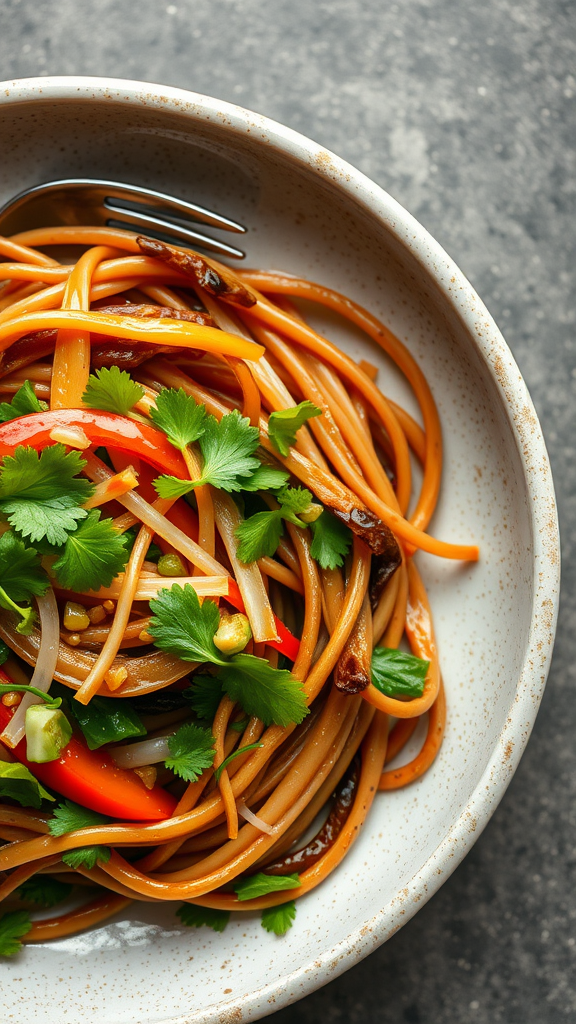
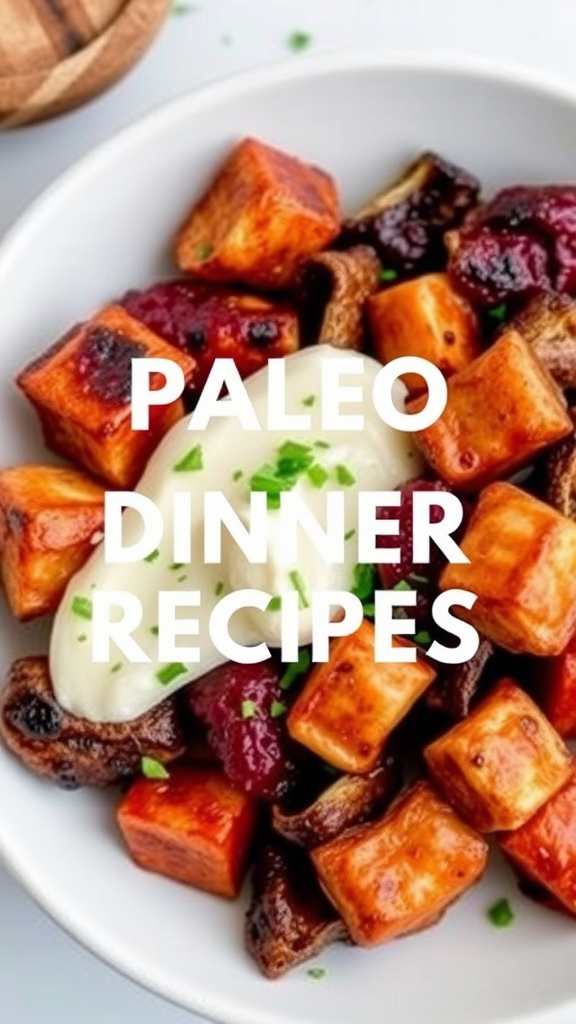
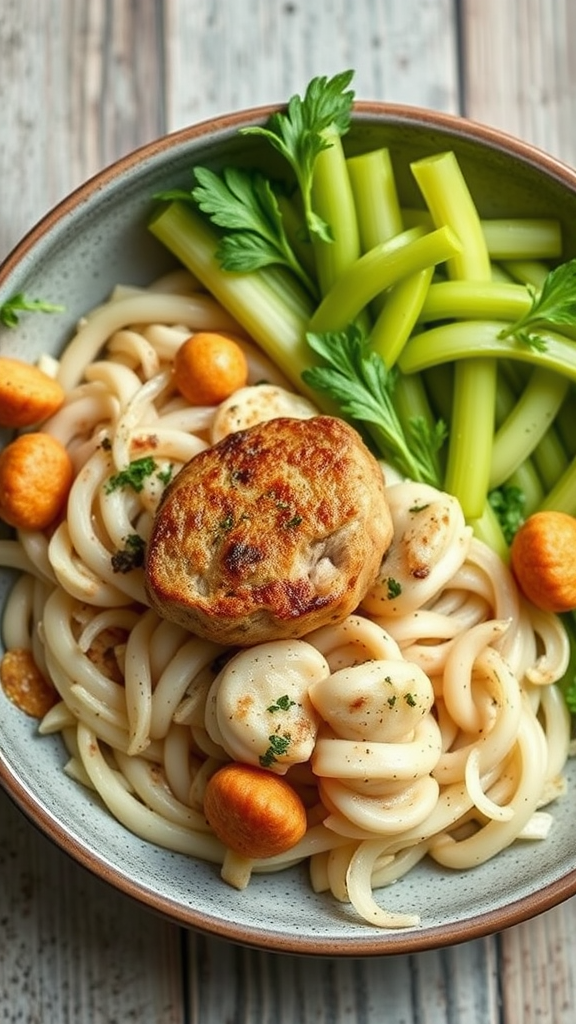
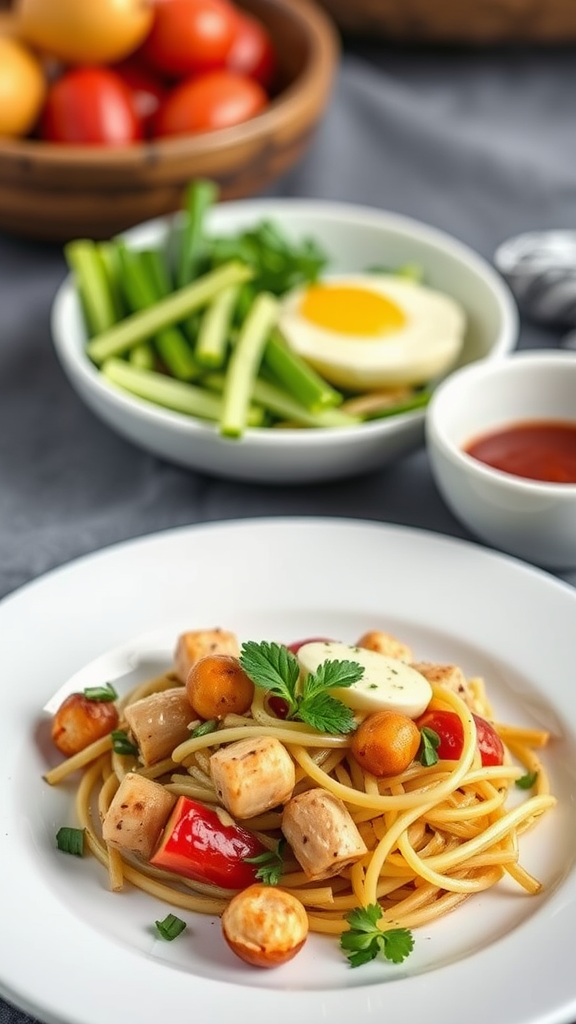
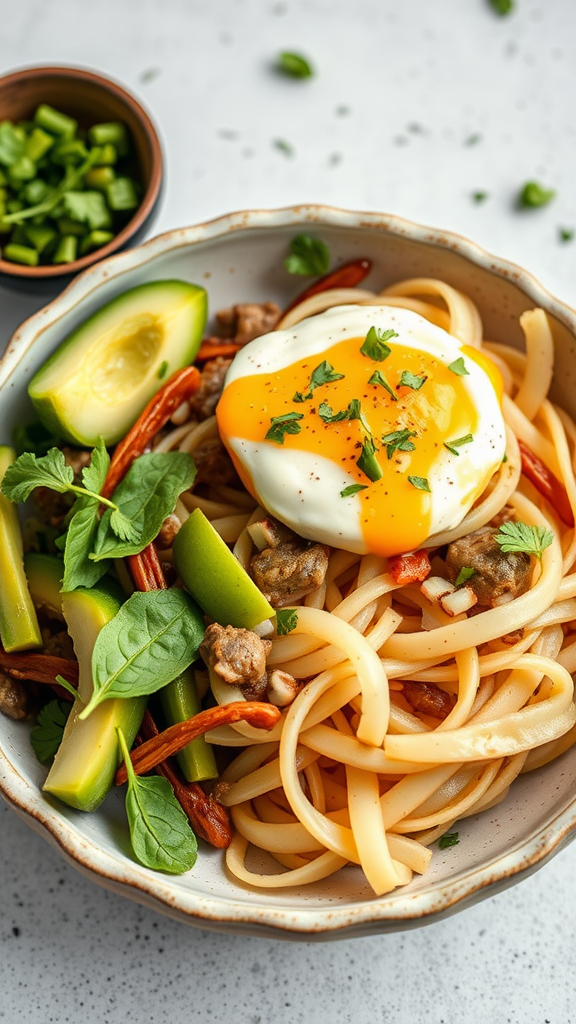
Leave a Reply